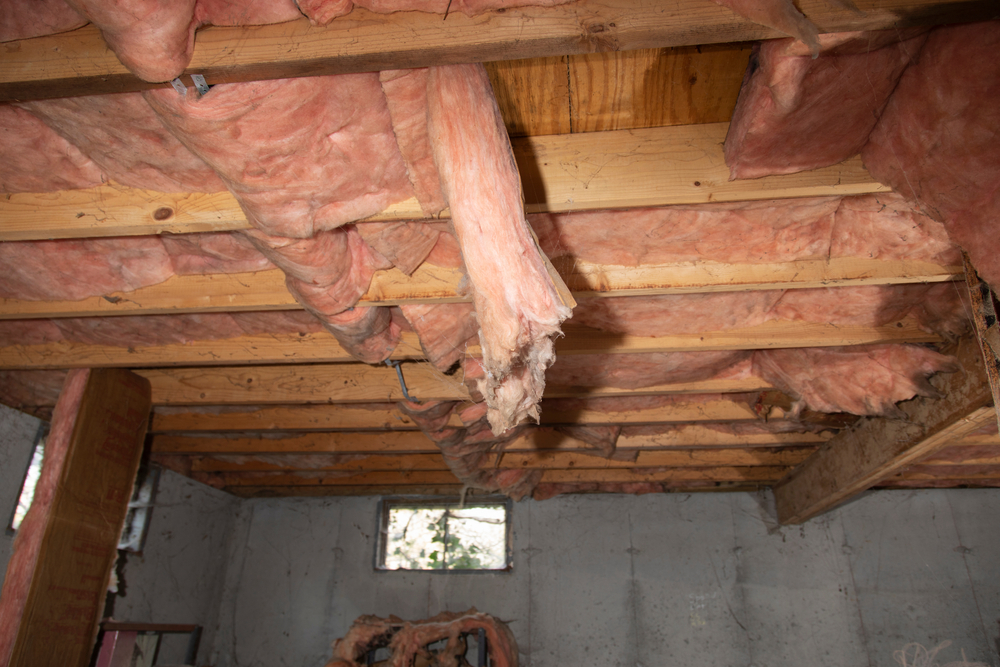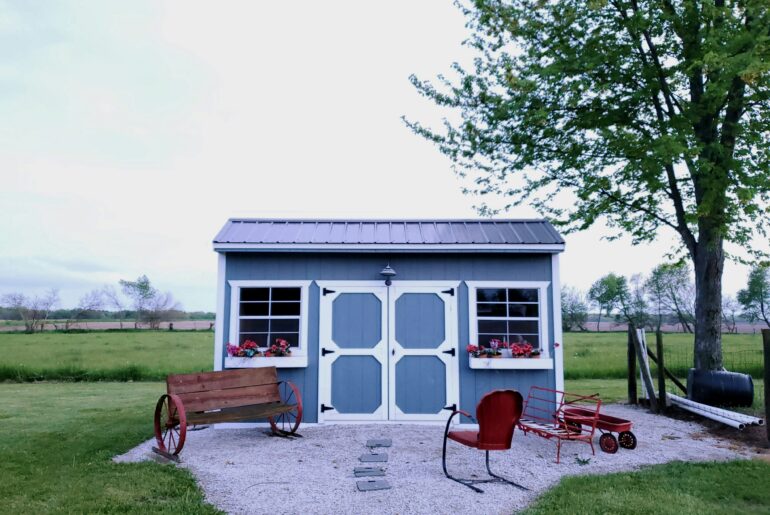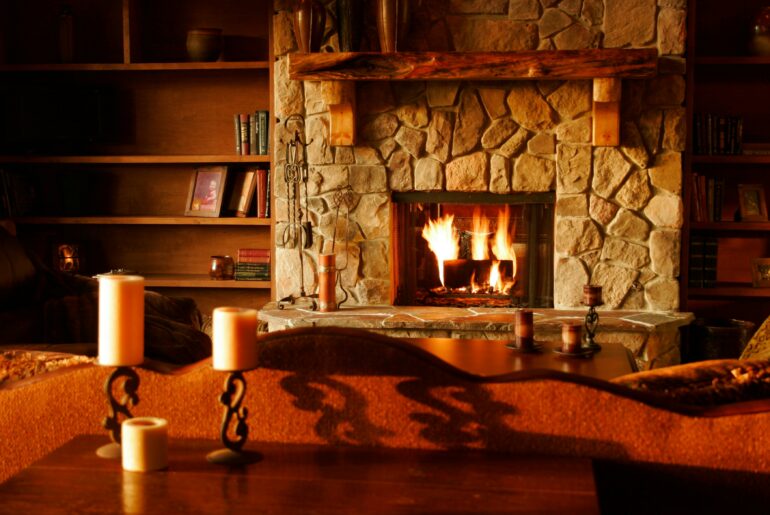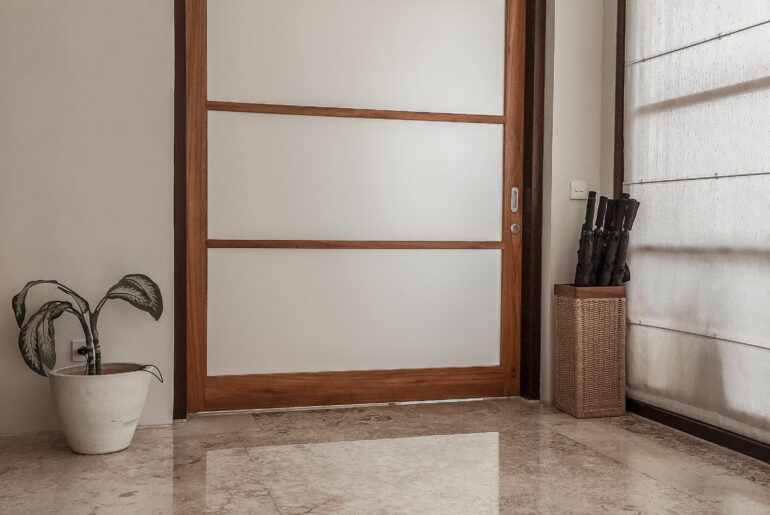Crawl spaces should be insulated to at least R-11 in most residential homes. With few exceptions, insulating your crawl space will pay for itself over time in energy cost savings.
Interestingly, some homeowners don’t place much importance on insulating their homes’ crawl space because they don’t interact with it very often. Some feel the investment is unnecessary because since heat rises, the temperature of crawl space does not matter.
Heated and cooled air escape a home in many ways, not just through the roof. To be clear, a structure will lose more heat through the roof than through the floor, but the difference may not be as much as it seems.
Insulating and sealing between the floor joists (or floor trusses) in a crawl space is an effective way to not only save money on energy bills, but will also keep the home more comfortable and prevent cold floors.
Here we will discuss the importance of insulating between the floor joists inside a crawl space. We will also offer a few tips the pros use to insulate between floor joists and suggest the materials best suited for the job.
Why Should I Insulate Between the Floor Joists In My Crawl Space?
The floor system of a wood frame structure (like a house) is usually constructed in one of two ways. Traditionally, floor systems include floor joists, which are wide, long, boards turned edge up, installed 12” to 24” on center. For our purposes here, if we refer to a floor joist the same will apply to a floor truss unless otherwise indicated.
In modern residential construction, floor trusses are very common because they can take nearly any form. Floor trusses are designed by a structural engineer to be as strong, or stronger, as a floor joist. Floor joists are limited in size by the lumber, while trusses essentially have no physical size limit.
Insulating the space between the joists also insulates the floor above simultaneously. Floor joist insulation should contact the underside of any subflooring as well to prevent cold floors.
Spray foam insulation, fiberglass batts, mineral wool, and rigid foam boards make insulating a crawl space simple, but some materials may work better for you than others depending on the project.
Here is a list of the pros and cons of common crawl space floor joist insulation materials and where they are used:
Spray Foam Insulation
Expanding spray foam insulation is the most technologically advanced crawl space floor joist insulation available. Spray foam is also usually the most expensive, as it often requires professional installation. Spray foam is appropriate for any area of the crawl space, not just between the floor joists.
Spray foam insulation solves most (if not all) of the common complaints associated with other forms of crawl space insulation, like air sealing, moisture control, and durability. Spray foam insulation is sprayed directly onto the surface where it expands slightly to fill small gaps and spaces.
Spray Foam Installation
Spray foam insulation is applied using a sprayer that mixes chemicals as they exit a spray nozzle. The chemicals mix instantly and react by forming a sticky foam that continues to expand after application.
As the spray foam expands, it fills tiny gaps between framing members that collectively place more strain on your HVAC system. Open cell spray foam is less dense and expands more, while closed cell spray foam is more dense and only expands about half as much as open cell.
Fiberglass Batts
Fiberglass batts are likely the most popular crawl space floor joist insulation because it is very effective, relatively inexpensive, and lasts for decades if well maintained. Installing fiberglass batts is a great DIY project that can pay for itself over time.
Fiberglass batts are best used in a faced version, which will include a vapor barrier. Fiberglass batts are well suited for floor joist insulation, but you will need insulation hangers like these. Since the mounting tab cannot be used in a crawl space installation these wire hangers provide the required support.
Fiberglass Batts Installation
Fiberglass batts are typically stapled directly to the edge of the floor joists using the included mounting tab. The mounting tab is part of a vapor barrier, which is often mistakenly installed upside down.
When insulating the space between floor joists, the vapor barrier must face up, not down. Many accidentally staple the batt to the edge of the floor joist like you would if insulating a wall. However, the correct way is to flip the insulation so that the paper vapor barrier contacts the underside of the subfloor.
Mineral Wool (Rock Wool)
Mineral wool crawl space insulation is made from slag, which is a byproduct of molten rock. The slag is mixed with other materials to form a semi-rigid panel, similar to a scrubber pad in texture.
Mineral wool floor joist insulation will last virtually forever, but it does require an additional vapor barrier.
Mineral wool crawl space insulation is also relatively expensive compared to fiberglass batts and rigid foam boards. However, mineral wool has outstanding heat resistant properties and will not ignite and produce harmful fumes, known as volatile organic compounds (VOCs). Often, this makes mineral wool the only approved insulation option in areas of high heat.
Mineral wool floor joist insulation is generally appropriate anywhere fiberglass batts would be used. Mineral wool is mostly used in crawl spaces when high resistance to heat is required, like around furnace doors and pilot lights.
Mineral Wool Installation
Before any mineral wool is installed a 6mm vapor barrier must be in place between the underside of the subfloor and the mineral wool. Mineral wool requires ventilation, so don’t accidently place the vapor barrier in the wrong place. The vapor barrier must be between the insulation and the subfloor, not the ground.
The mineral wool is trimmed very carefully to fit each space between the floor joists, as the material has no mounting tab. Adhesives should be avoided with mineral wool, as it may block the necessary ventilation. Mineral wool can be stacked much like rigid foam boards, so the more insulation you install, the tighter the fit must be to resist the added weight.
Rigid Foam Boards
Rigid foam boards make excellent crawl space floor joist insulation because they are inexpensive, effective, and make a great DIY project, even for first timers.
Most crawl space foam boards are made from either EPS (styrofoam is in this category), or XPS, which is a form of polystyrene plastic. Both foam boards do an effective job of insulating crawl space floor joists, providing anywhere from about R-3 per inch to R-6, depending on the panel.
Rigid foam board insulation is often available in thicknesses from ¼” to 4”, providing great control over the R value. Rigid foam boards can be stacked together and connected to each other with adhesives like this one.
Rigid foam board insulation is appropriate for crawl space floor joists when cost is a factor because the material is inexpensive and an easy DIY project. Rigid foam board is appropriate anywhere fiberglass batts can be used, although foam boards will require adhesive or foam board tape as well.
*Pro Tip*
Never attach foam board insulation between floor joists in a crawl space using nails or screws. Mechanical fasteners will be too long and may accidentally be driven through the finished floor.
Rigid Foam Board Installation
Rigid foam boards are the most DIY friendly crawl space floor joist insulation option. The material is extremely lightweight, so it can be held in place by adhesives or foam board tape. Foam boards should be snug, but they do not require compression like mineral wool. Instead of sealing tape, you can use caulk to seal any spaces and then install the rigid foam on top.
What Other Methods and Materials Can I Use For Crawl Space Floor Joist Insulation?
Another option combines spray foam and rigid foam boards. In this method instead of using caulk to seal gaps, you can use spray foam as an adhesive. The pros spray the foam in the corners between the subfloor of the crawl space and the floor joists. This method is appropriate anywhere foam boards would normally be sealed with caulk, like between floor joists.
As the spray foam begins to expand, the foam boards are pressed into place and adhered by the sticky foam. Using this method takes as long as using caulk, but the spray foam provides a better seal than caulk, while adding R value. The spray foam is also not subject to detaching in future, so it also requires less maintenance.





